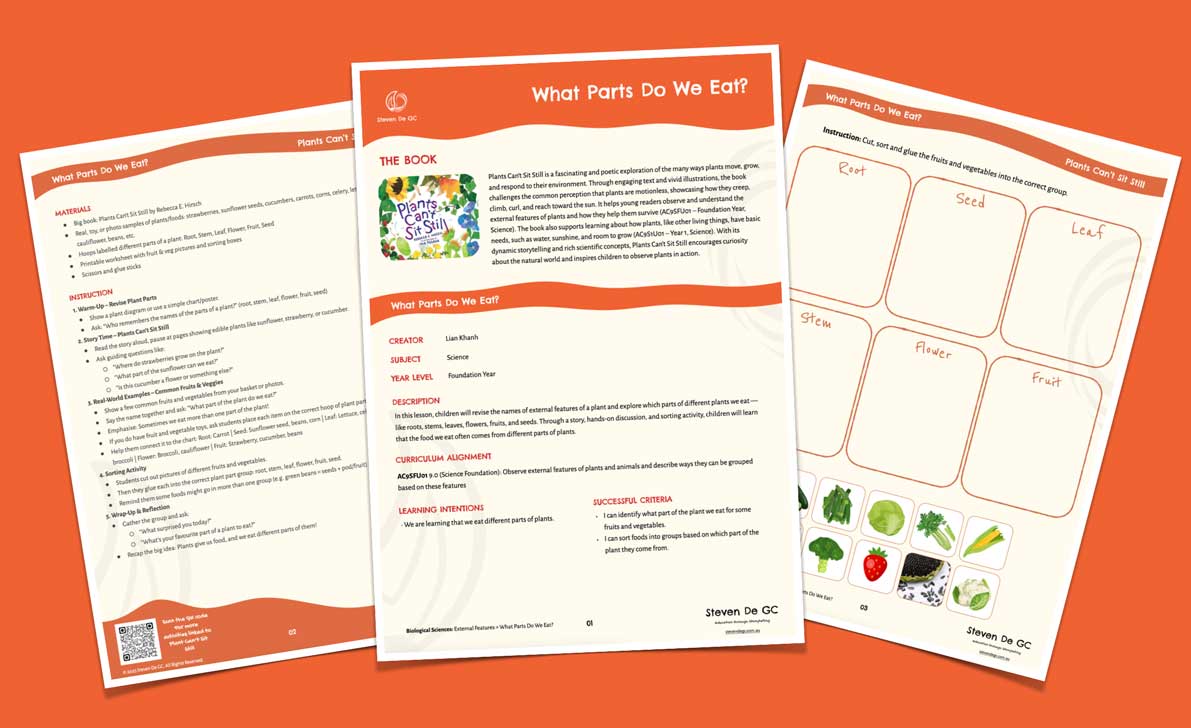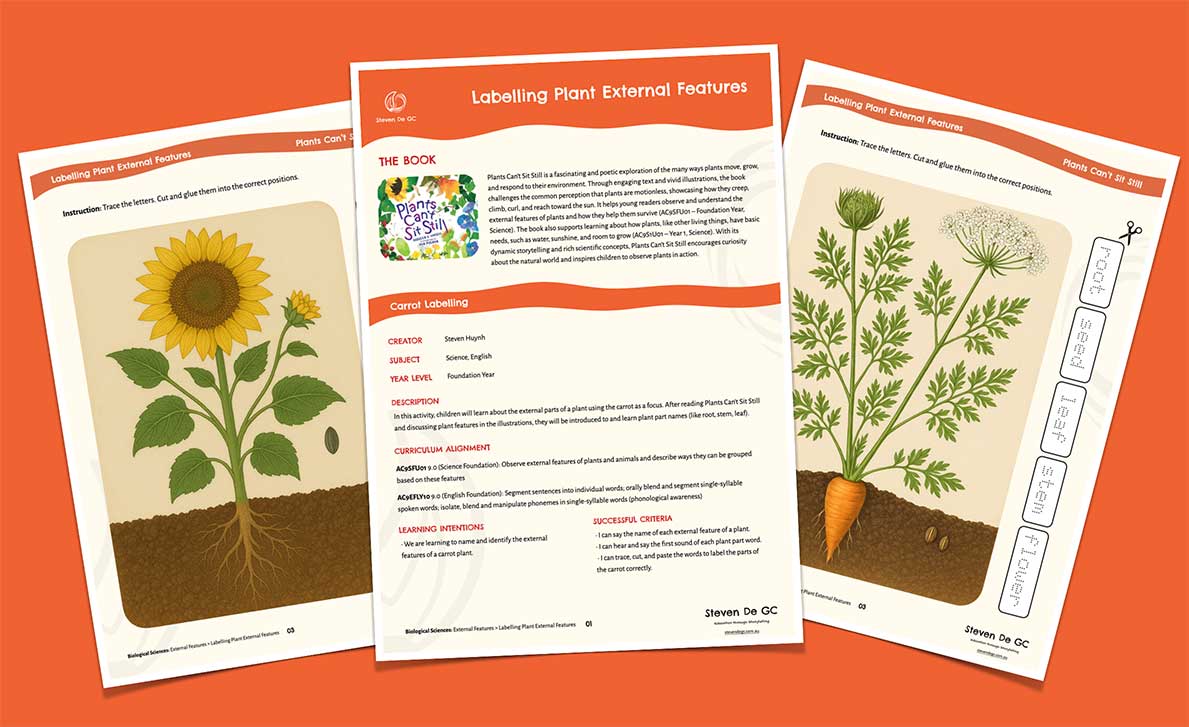AC9SFU01
Science | Foundation
Observe external features of plants and animals and describe ways they can be grouped based on these features
Elaborations
• observing fruits and vegetables and identifying them as parts of plants such as roots, flowers, fruits or leaves
• recognising humans as animals, describing external features of humans and exploring similarities and differences compared with other animals
• using magnifying glasses or digital cameras to observe and identify external features of plants including seeds, flowers, fruits and roots, or of animals such as eyes, body covering, legs and wings
• sorting collections of model animals and explaining different grouping strategies
• recognising First Nations Australians’ use of observable features to group living things
• exploring how First Nations Australians’ observations of external features of living things are replicated in traditional dance
Expand | Collapse Search filter
-
What Parts Do We Eat?
📔 Plants Can’t Sit Still by Rebecca Hirsh• We are learning that we eat different parts of plants.
-
Labelling Plant External Features
📔 Plants Can’t Sit Still by Rebecca Hirsh• We are learning to name and identify the external features of a carrot plant.
-
My Body Parts
📔 Here are My Hands by Bill Martin and John Archambault• Students will identify different external body parts and their functions.









